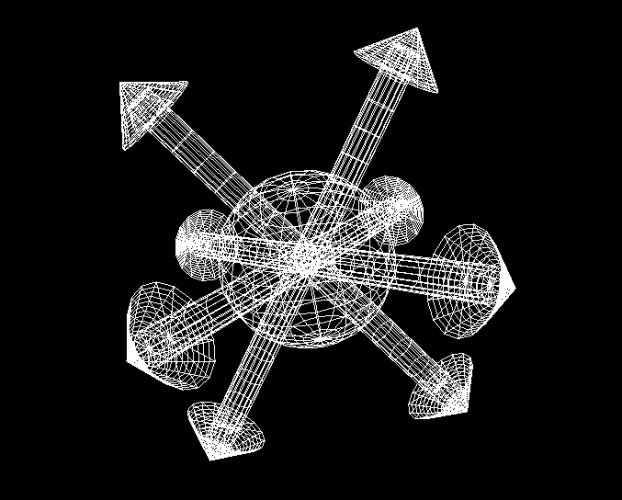There are two primary symbols of Chaos: the Chaos Star and the Chaos Sphere. Both convey the same concept, but one exists in two dimensions, and the other in three. While the Chaos Star is defined as “eight arrows in a radial pattern,” the Chaos Sphere can be described as “eight arrows in a three-dimensional radial pattern.”
As I’ve mentioned before, I continue to be fascinated by these symbols. My meditations almost always lead me to visualize them, with increasing levels of detail. It’s become something of an obsession—though a powerful, magickal one. How do I build them? What are their deeper properties? The more I dive into this, the more I feel I am attuning my mind to a “chaos frequency.” I’m not talking about the ideological concepts of chaos, but rather a state of consciousness where *everything* is possible. The Chaos Star/Sphere has revealed itself to me as the ultimate sigil for freeing the mind. Don’t just talk about freedom. Don’t think about it. Charge the chaos symbol into yourself until it transforms you.
And what does it hide beneath its surface? As anyone who has studied something for a long time might understand, I began seeing “things” in the symbol. Mostly, I saw hidden geometries that seemed to channel powerful numbers, offering me hints for my rituals.
The Chaos Star is simple. It consists of 8 arrows evenly distributed across 360°. Dividing 360° by 8 gives us 45° between each arrow. Everyone knows that 45° is a special angle. From this, we can see 8 triangles and an outer circle. But I didn’t trip on this… yet.

For now, let’s shift focus to the Chaos Sphere, where a whole new array of insights emerge.
The arrows in the Chaos Sphere are the space diagonals of a perfect cube. The edges of the cube ensure that all the arrows are separated by the same distance, since all edges share the same length. But how do I calculate the angles of these space diagonals? Well, I’m not exactly a math expert, but after a few days of refreshing my trigonometry, I finally figured it out.

To my surprise, what defines the base of rotations for the Chaos Sphere’s arrows is something called the Magic Angle. Yes, indeed: 54.735610317° is considered “magic” by both science and medicine.
http://en.wikipedia.org/wiki/Magic_angle
http://en.wikipedia.org/wiki/Magic_angle_(EELS)
Of course, the Magic Angle isn’t alone. There’s its counterpart:
35.264389682° (Could we call this the “Dark Magic Angle”?),
its double:
109.471220634° (The angle between two arrows of the Chaos Sphere),
and its opposite double:
70.528779365° (The opposite angle between two of the Chaos Sphere’s arrows).
These numbers can be just numbers, or under the right paradigm, they can be incredibly powerful. Personally, I’ve finally found a justification for a mudra that comes to me almost every time I enter a deep meditative state. My hand moves toward my face, and my fingers naturally form a specific angle—the angle between two arrows of the Chaos Sphere. Until now, I had no idea why I kept doing this. But now I know—it’s because the arrows of the Chaos Sphere were entering my mind, my body, my soul. From this moment on, I’ll call it the Chaos Mudra.

And with that, I now have all the data I need to generate a Chaos Sphere entirely by code. See it here. This is the first step toward creating the Chaos Sphere Generator.


Leave a Reply